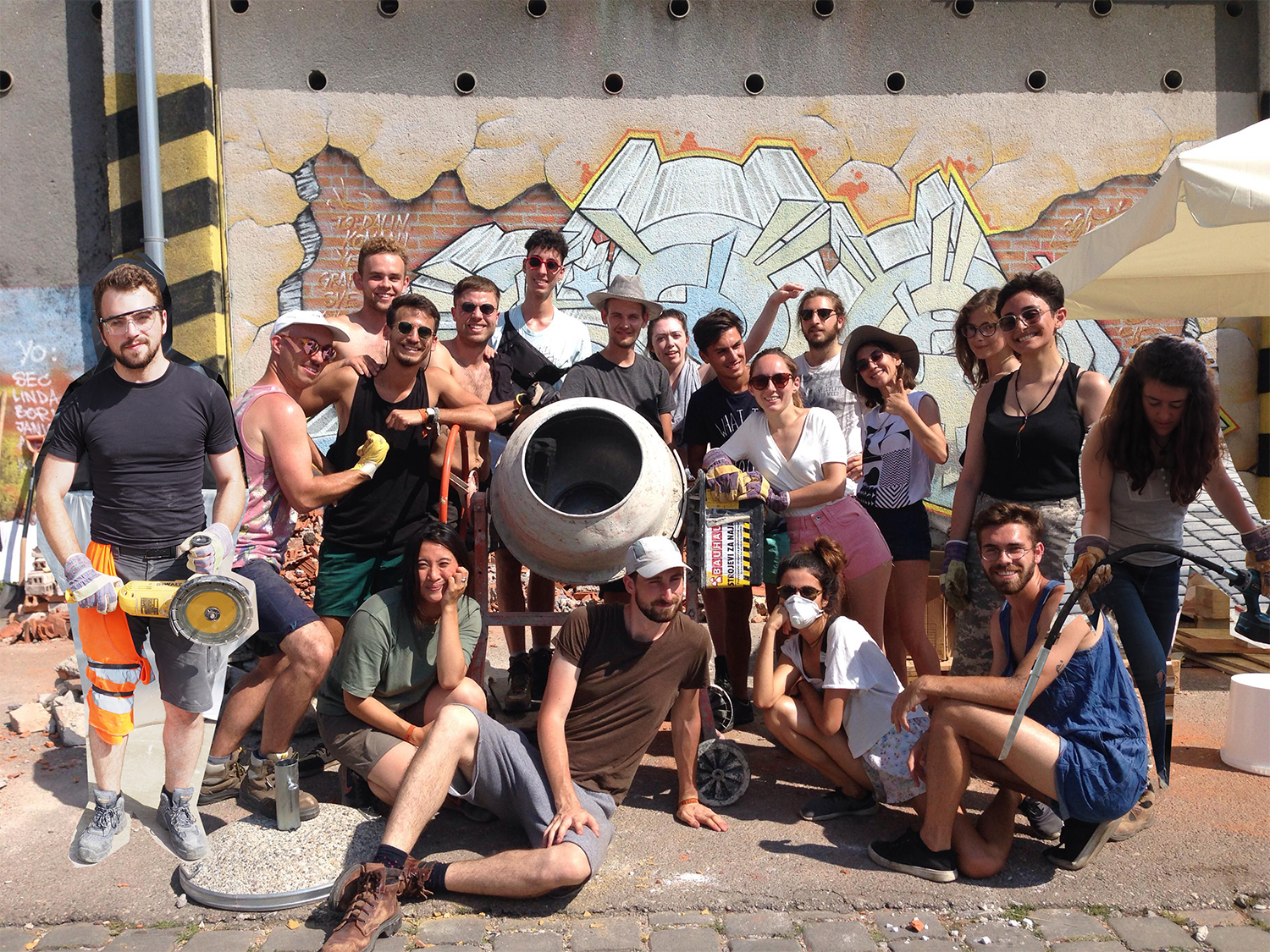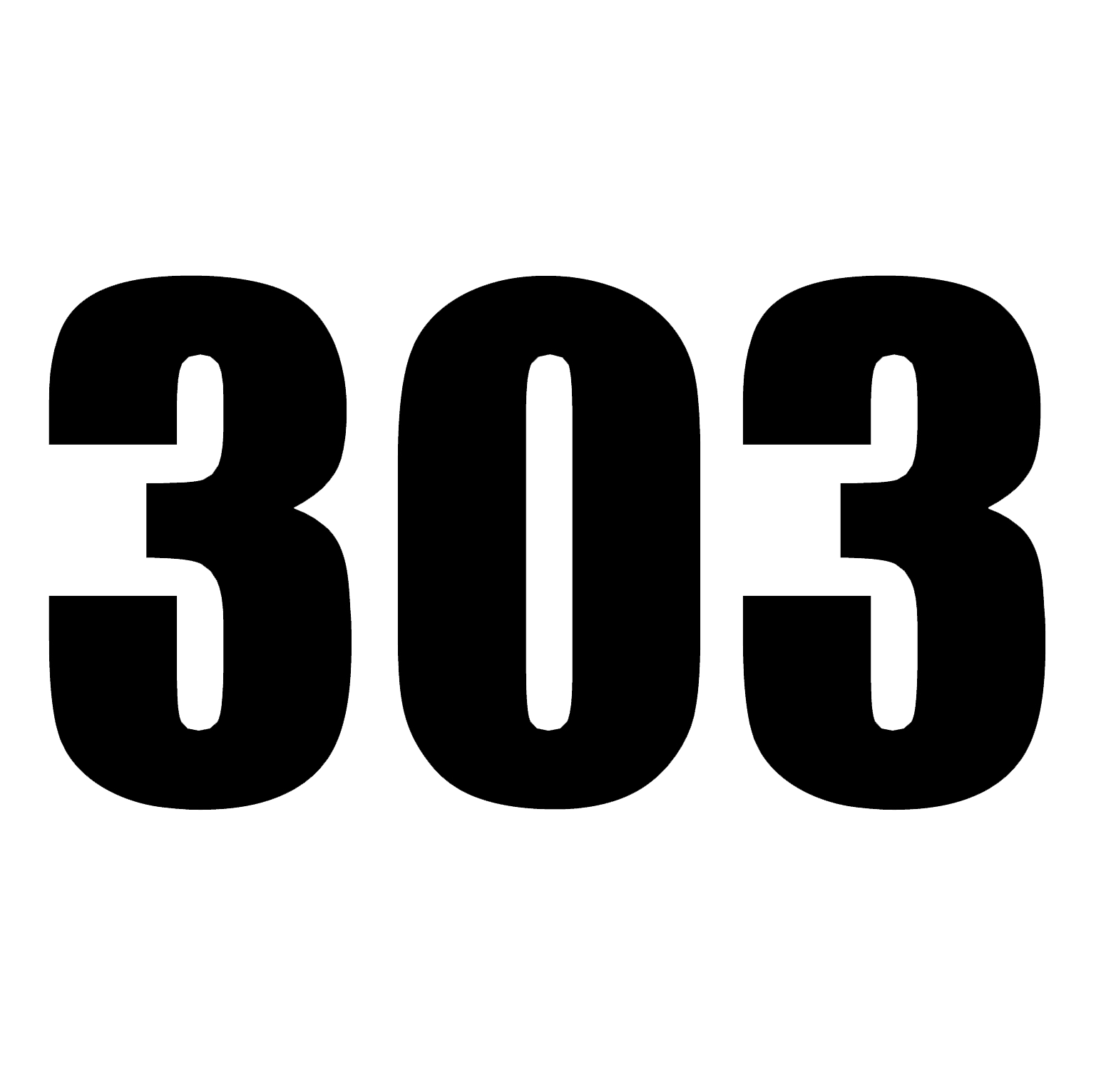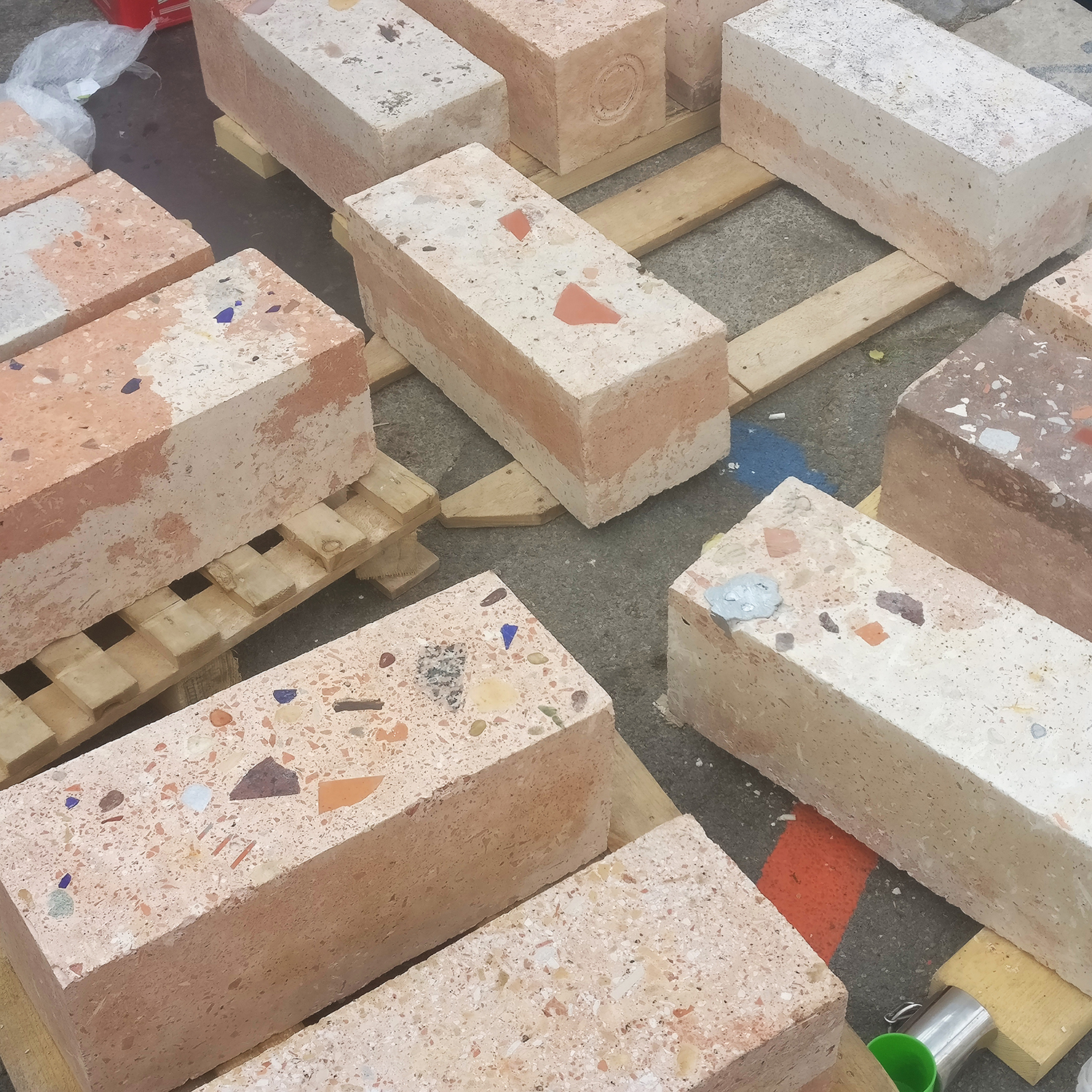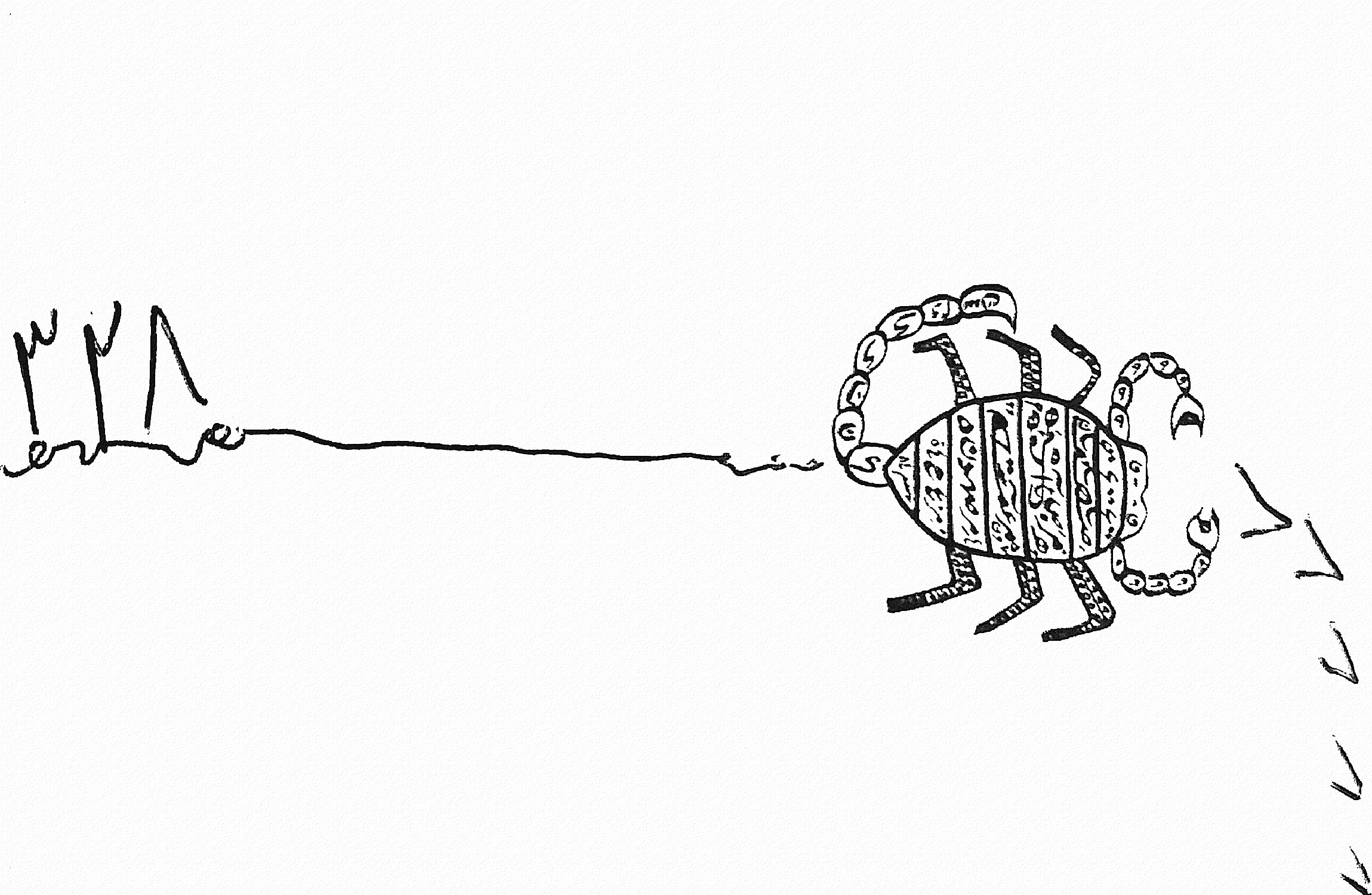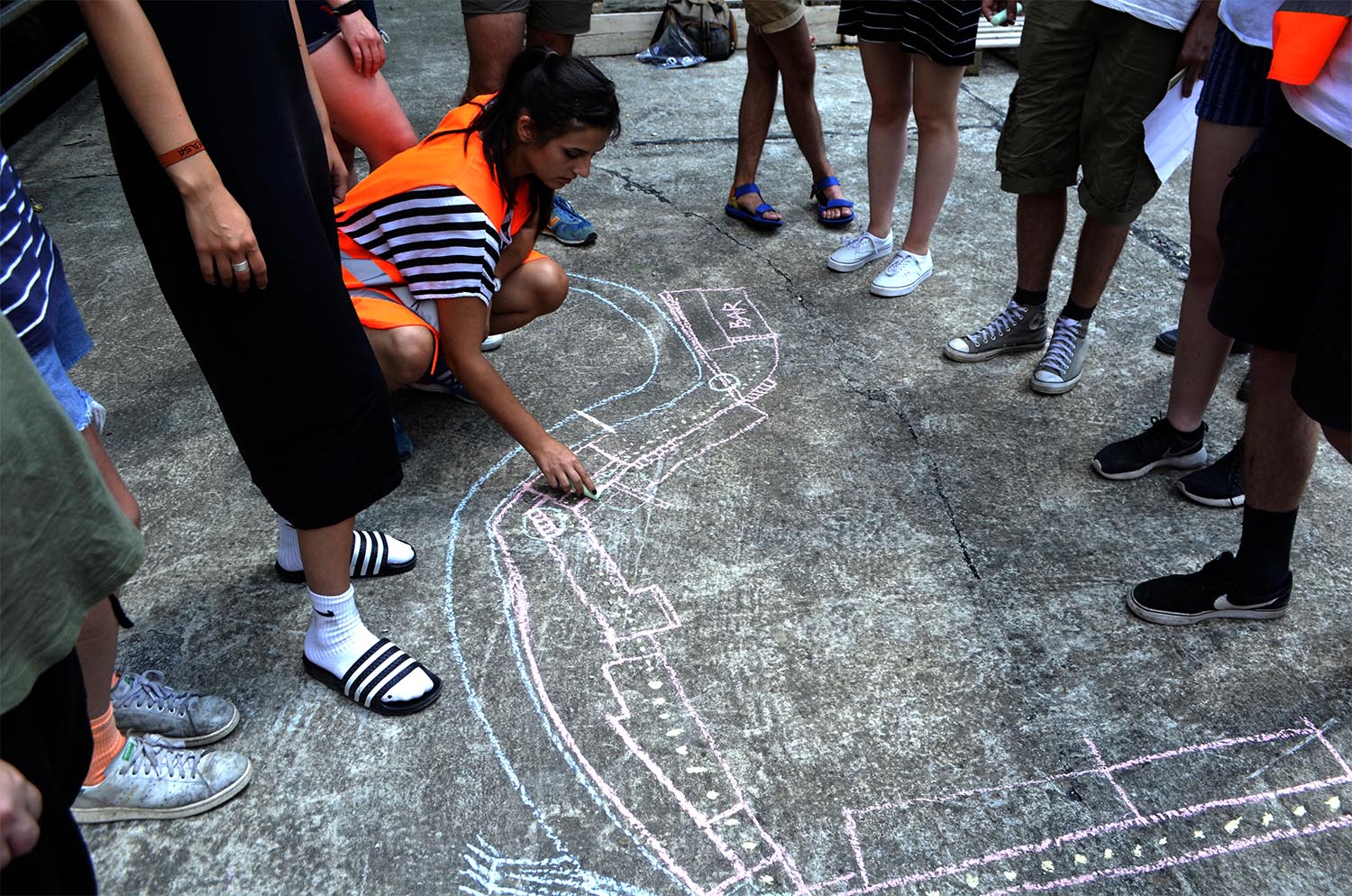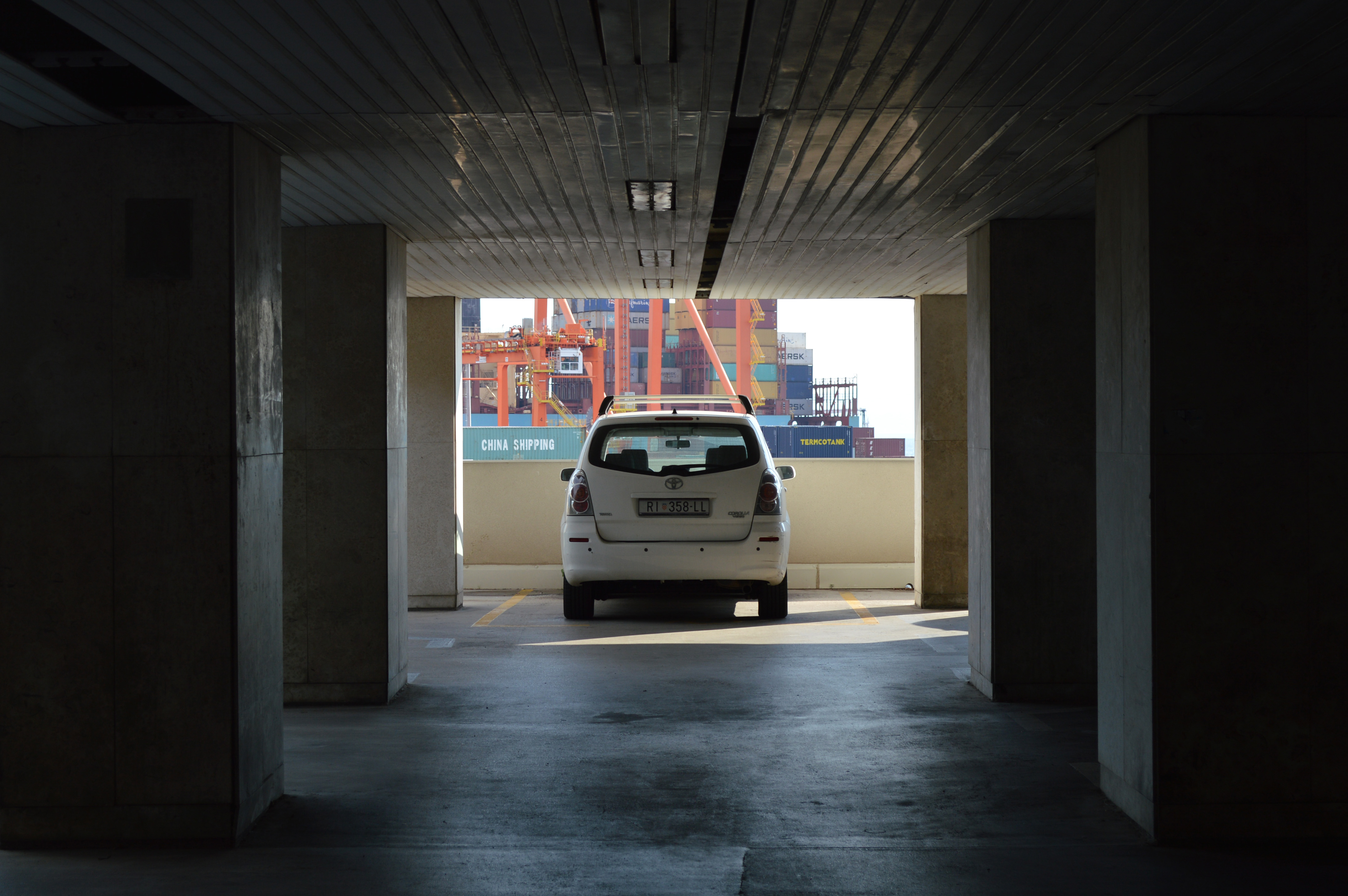A mason building walls often use the rubbles he can find right on site. Those materials coming from the past, mostly damaged, are often neglected, barely considered or concealed. But it’s a resource for the mason to save time and money while freeing the surroundings of this rubbish. And in a spontaneous gesture, the mason continues the history of the site. Cities change, just like Rijeka does. They evolve on their own: in a way, destroyed buildings could offer useful waste, a great amount of material that can later be used for new constructions, continuing to tell new stories.
Masonry takes part in this perpetual reconversion, creating a fresh material to carve, a unique rock composed of recycled Rijeka’s building rubbles, poured into the mortar. Broken bricks, roofing slates, and other found materials become precious resources to collect and to mason together – first step to reanimate places by offering them a new marble to engrave.
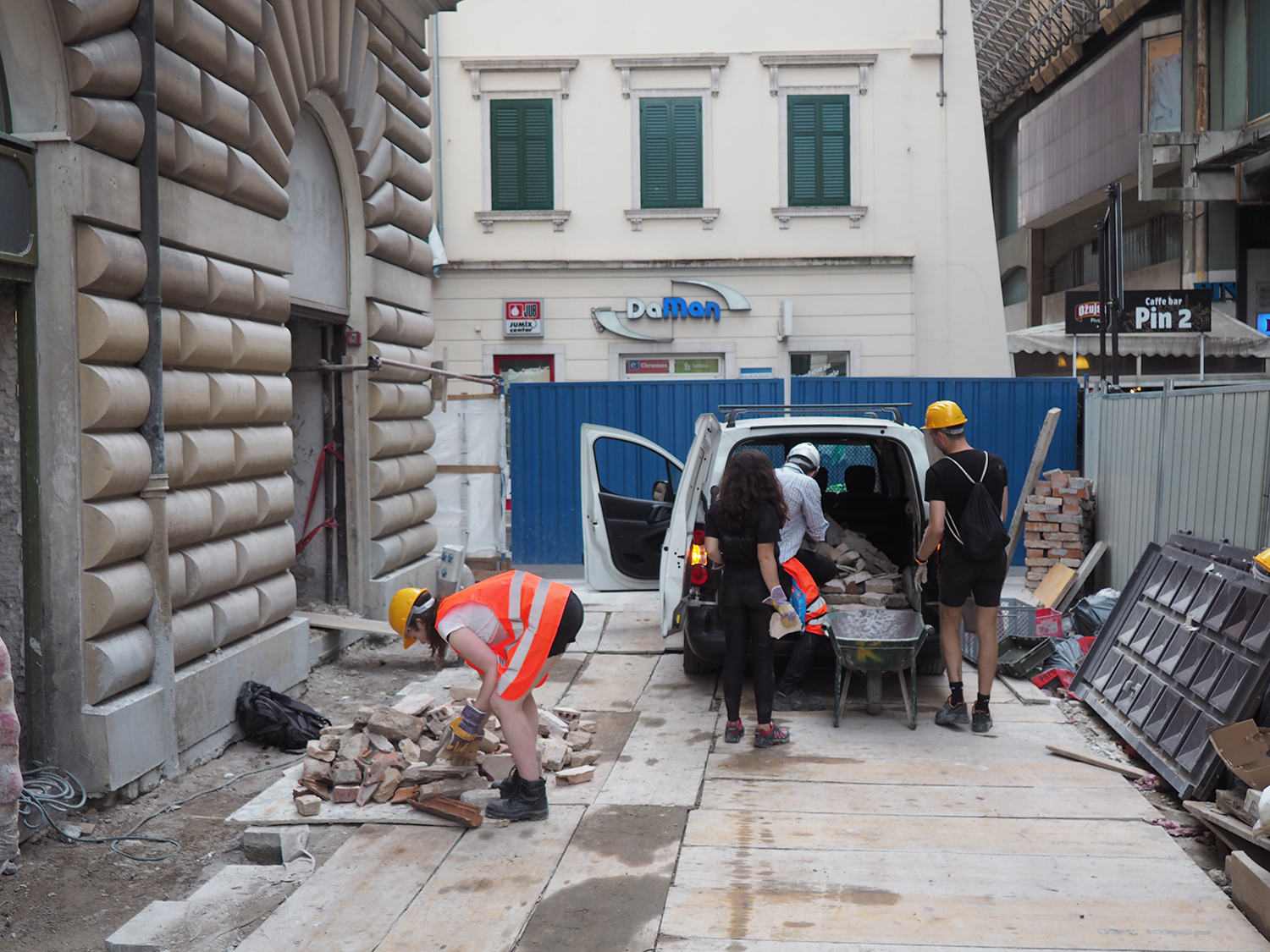
Process
The first days of the workshop were dedicated to exploring the city and its surroundings in order to collect the rubble. The workshop participants went through the streets of Rijeka, construction areas and abandoned places to find broken bricks, stones, marble and ironstones that were neglected or useless.
By breaking them into small pieces or into powder participants were able to mix them with cement and water. By using this rubble in a local and economic way, they created a new ‘terrazzo’ which was molded in wooden formworks. After a few days which allowed the concrete to dry, participants could demould this new stones. Then, they would grind and sand them in order to reveal the rubble hidden in the cement. The last step was to oil and varnish these stones in order to protect them and to highlight their color. An important part of the workshop was given to the experimentation on the material.
First days were devoted to the creation of the biggest objects. This way, participants had to work as a team – what was especially important to learn how to use the tools, to check other’s safety… Once the participants became more autonomous, they were able to work separately or in smaller teams with their own rubbles, to try out more specific ideas.
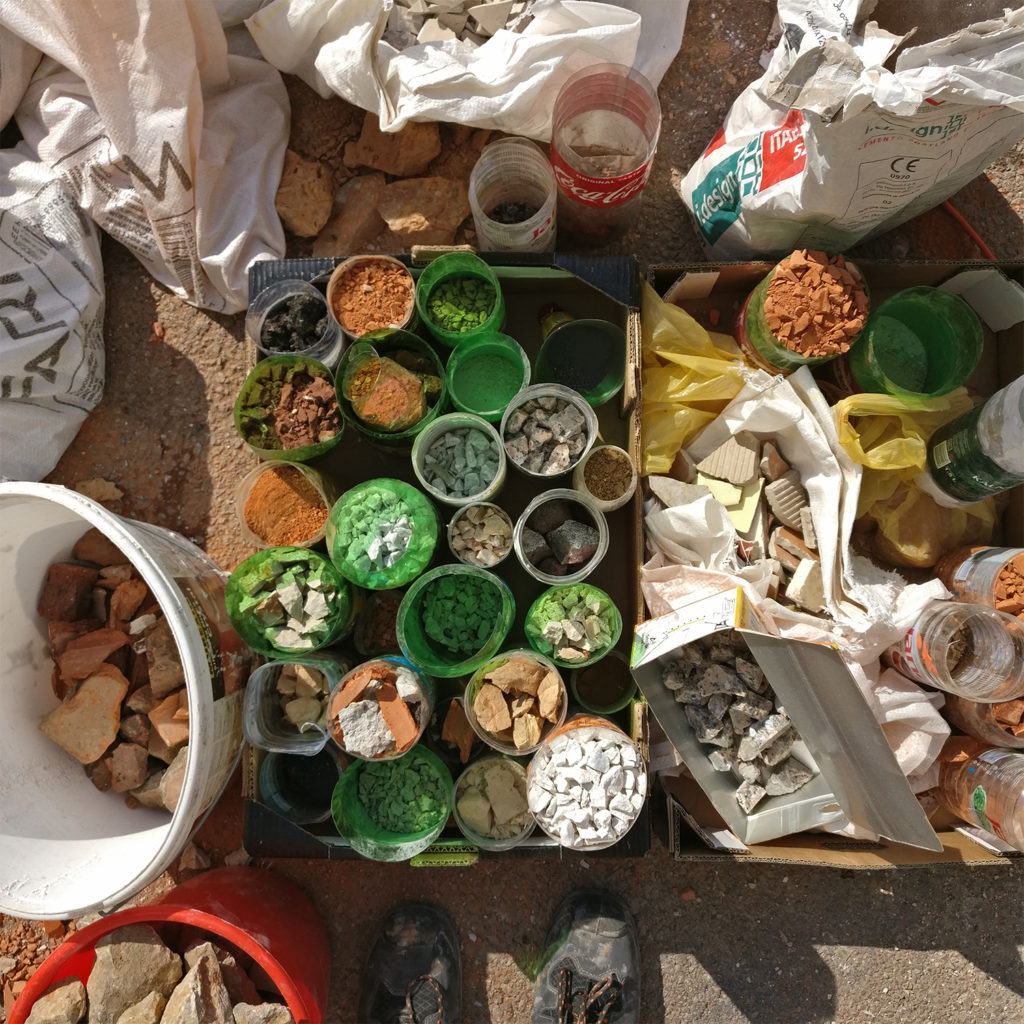
Outcome
We designed for and with other workshops some formworks made out of the wood where we molded our new material.
In this way, we made a terrazzo for the entrance area of the Exportdrvo building, steps for the Level Up workshop, a loudspeaker for Reconnect workshop and a circular flooring for Molo Longo.
[Best_Wordpress_Gallery id=”159″ gal_title=”Masonry – EASA 2018″]
